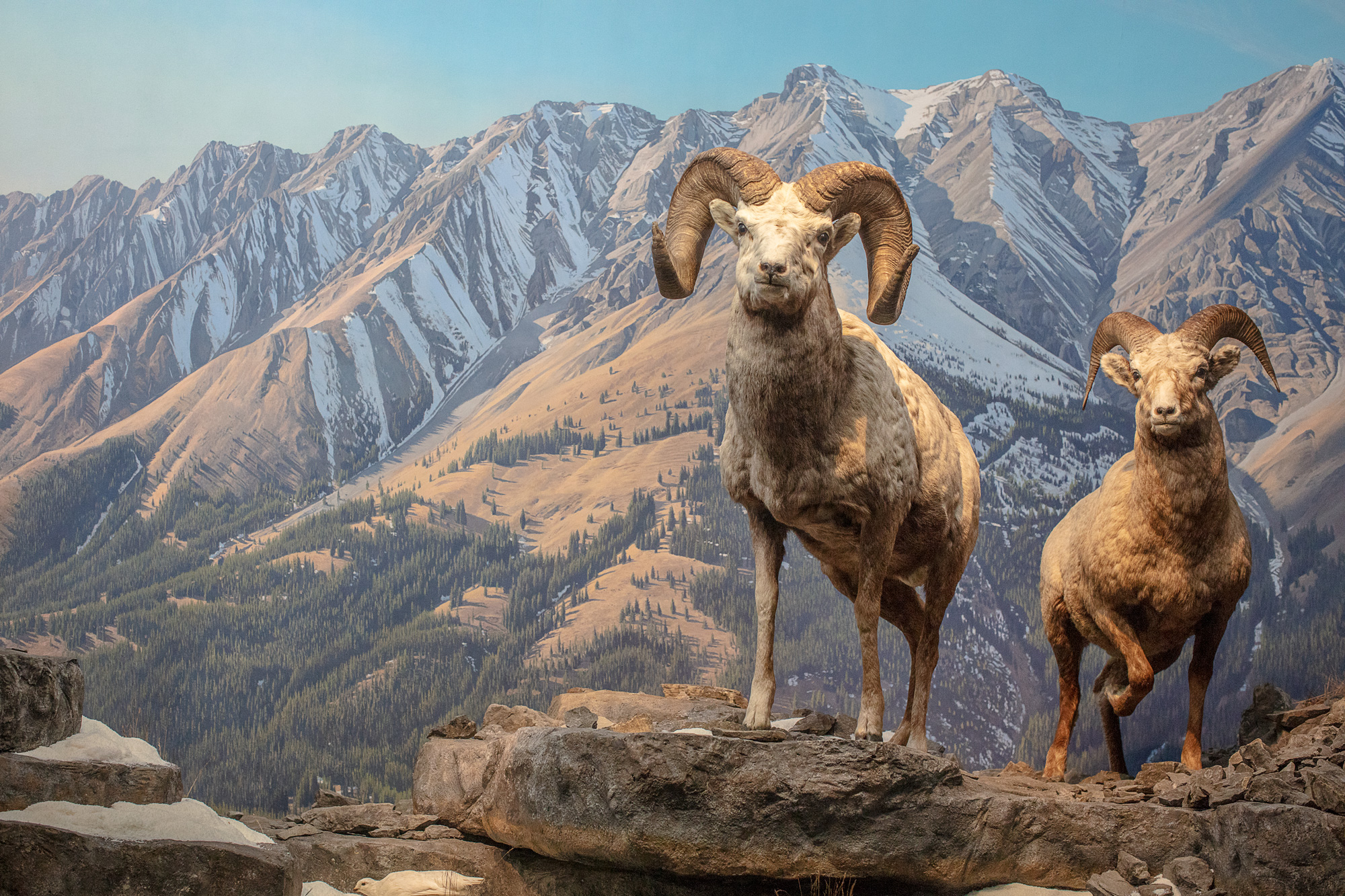
As the Peabody Museum of Natural History’s prized dioramas undergo renovation, visitors can now watch Wyoming buffalo grass planted, cracks in bison skin repaired and other small birds and mammals replaced right in front of their eyes.
The restoration was made possible by a $25,000 grant from the Avangrid Foundation, based in Orange, Connecticut. The Foundation invests in projects with sustainable community impact, according to its director, Nicole Licata Grant.
The Mule Deer, Alaskan Brown Bear and Bison exhibits are the three dioramas undergoing treatment. The work on the dioramas began last spring and is slated to finish by the end of October. The dioramas, which are three-dimensional with various flora and fauna species in the foreground and a painted wall and ceiling in the background, are between 55 and 75 years old.
“They were, for their time, kind of like virtual reality machines,” said David Skelly, the director of the museum. “It was a way of bringing people out of where they were and transporting them somewhere else.”
Skelly added that the dioramas gave people who were unlikely to travel the opportunity to experience different ecosystems and species.
Michael Anderson, head of the restoration effort and museum preparator, said that he believes the dioramas are “unique artistic creations” that educate the public.
“They’re a really valuable way to teach people about nature and the environment and have people become engaged in a deep way,” Anderson said.
Anderson added that the dioramas were created in response to efforts to preserve various species, particularly the declining bison population.
The taxidermic bison, which were made in the 1880s, are a part of the so-called “mammal mounts” — taxidermy of various mammal species. Anderson said that those mounts needed the most repair.
Anderson added that most of his work involves giving the bison new coats of paints and dying their fur, although he said that he has discovered other problems as he goes along.
Anderson said that he was excited that the visitors could see the work being done in real time. While the dioramas have been a part of the museum for many years, nothing of this nature has been available for the visitors to spectate before. Anderson believes that the visitor response has been mostly positive, besides that of people who are put off by the taxidermy in general.
“It’s just odd to see some human being inside these habitats, it’s very weird,” Anderson said. “That factor is uncanny and cool.”
Licata Grant said that the Avangrid Foundation will continue to invest in arts and culture, especially efforts that provide increased access to those spheres for the youth in the community. She cited the foundation’s pledged support for the Peabody Museum’s “Evolutions” after-school program, which encourages future education and engagement in STEM.
She added that the foundation is interested in advancing new tools to make the exhibits more interactive in the future.
“We have been thinking about what’s next for the dioramas,” she said, “and how we make them more modern.”
New technology has already been incorporated into some of the dioramas. Recently, Anderson has used a 3D printer to create new birds from scans of taxidermies, which helped reproduce rare species. Still, Anderson emphasized that such creations will always look like models, as certain aspects of taxidermy, like real feathers, cannot be replicated.
Anderson said that he believes that the future of the dioramas is uncertain, citing the rising popularity of more technology-based museum exhibits. He emphasized that the dioramas were meant to be “contemplative” in nature, without the “bells and whistles” of new exhibits.
While some members of the scientific community have pushed for putting up more labels and information about installations like the Peabody dioramas, Anderson said that the narratives of the dioramas should speak for themselves. The dioramas in general, he added, have always been a source of some tension because taxidermy is “an outlier” in the art world.
“It’s not popular because [the dioramas are] expensive and they take up a lot of space,” he said. “I’m not optimistic that [they are] going to last other than in little pockets. Hopefully, the Peabody is one of them.”
Anderson works on the exhibits most weekdays from 10 a.m to 3 p.m.
Alayna Lee | alayna.lee@yale.edu .







